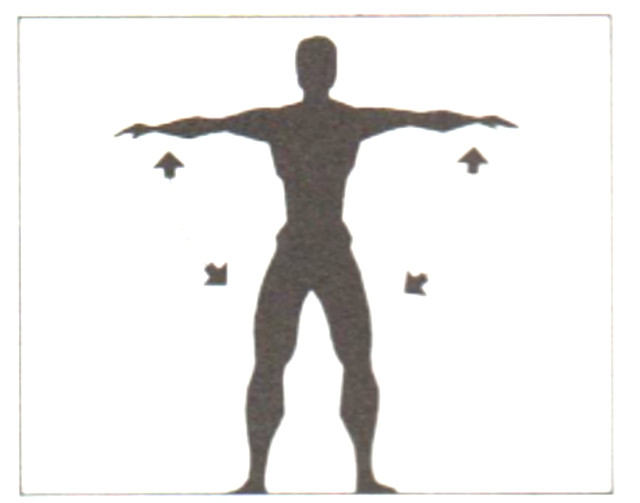Benefits: Strengthens the arm abductors, especially the deltoid muscles and supraspinatus tendon, against gravity. With the palms upwards, also strengthens some of the shoulder’s rotator muscles. Strong shoulder abductors help the arms to work efficiently, without strain on the neck. Weak abductors can contribute to muscle pain in the neck and upper trunk. Lifting the arms away from the body also helps speed up the circulation - this can help keep you warm in cold conditions.
Position: Sit or stand, with your back straight, head up and arms by your sides.
Movement: Lift your arms sideways, keeping your palms facing downwards.
Variation: Lift your arms up sideways with your palms facing upwards.
Repetitions and frequency: 3-10 times, 2-3 times a day.
Progression: When you can do the full movement comfortably and easily, use light weights on your wrists or in each hand.
Note: Avoid pain. Keep your neck muscles as relaxed as possible and make sure you don’t hitch the shoulder up. You may need to use a mirror to check that you are lifting your arms without over-using the neck and shoulder girdle muscles. If lifting the arms with the elbows straight causes pain, try the movement with the elbows bent, keeping the forearm at right angles to the upper arm. Even if you can only lift a little way without pain, it is still beneficial for re-training co-ordination in these major shoulder muscles, provided you do the exercise accurately.
After injury: The arm abductors are inhibited following any shoulder injury, after most arm or hand injuries, major or minor, and especially after using a sling to support the injured arm. If you don’t recover full strength in them, you will overuse the muscles of the neck and upper back, causing strain in these areas. You are also more likely to cause stress in the elbow and forearm. This exercise should be done as quickly as possible after any arm injury, within pain limits.



